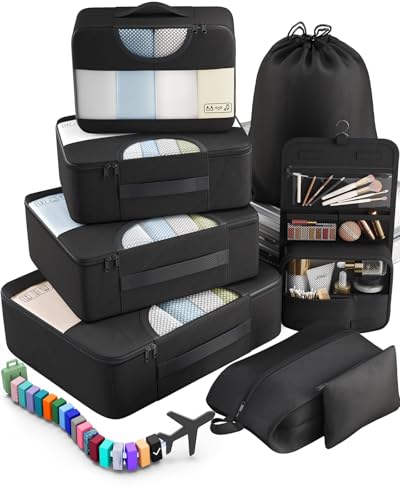In Nepal, they use Type C, D, and M power plugs and outlets. The voltage is 230V, and the frequency is 50Hz.
So, you’ll need a travel adapter in Nepal. Their plugs and outlets are different from the Type A and B ones we use back in the States.
Quick Overview of the Plugs in Nepal:
- Plug type in Nepal: C, D, and M
- Standard voltage: 230V
- Frequency: 50Hz
- Need a travel adapter? Yes, you do need a travel adapter
- Need a voltage converter? Device-specific — check before you pack
- Recommended plug adapter: Vintar Universal Travel Adapter Kit
We source our information directly from local power authorities, global standards organizations such as the IEC, and real-world feedback from travelers around the world.
The Only Travel Adapter You’ll Need in Nepal
Not all travel adapters work in Nepal. Pick the wrong one, and your devices might not charge at all. We don’t sell them, but we’ve researched the best one for you—safe, durable, and easy to use:
Recommended Travel Plug Adapter
by 1,000+ travelers on Amazon
If you’re already traveling or at your destination without a power adapter, no worries—you’ll probably be able to find one nearby. Still, bringing one from home just saves you the extra step and gives you one less thing to think about.
People visiting Nepal often also travel to India, Bangladesh, and Bhutan. Always check what kind of plug or adapter is needed.
Power Outlets in Nepal
In Nepal, they use Type C, D, and M power plugs and outlets.
Type C

Type C outlets have two round prongs and no grounding pin. Type E and F plugs usually fit too, but grounded plugs will need an adapter.
Type D

Type D outlets have three large round prongs in a triangular layout and typically only accept Type D plugs, although Type C plugs might fit loosely and are not recommended for safe use.
Type M

Type M outlets have three large round prongs like Type D but spaced farther apart, designed for high-power appliances, and only accept Type M plugs—Type C may fit, but it’s unsafe and not recommended.
Do You Need a Voltage Converter?
Planning a trip to Nepal? The voltage there doesn’t match the 120V we use in the U.S., so you’ll probably need a voltage converter.
To avoid electrical issues, always check the voltage specifications on your device’s label before heading abroad. If it reads “100-240V, 50/60 Hz”, your device is dual voltage and can handle both 120V and 220-240V without requiring a converter. Most laptops, tablets, cameras, and smartphones have this feature.

Which Travel Devices May Need a Converter?
Looking for a solid voltage converter? These highly rated options are a good place to start.
| Device | Need Converter? | Notes |
|---|---|---|
| Phone | ❌ No (usually) | Most modern phone chargers are dual voltage (100–240V) |
| Laptop | ❌ No (usually) | Check the power brick label for 100–240V |
| Hairdryer | ✅ Yes (often) | High wattage; many models are not dual voltage |
| Electric toothbrush | ⚠️ Check voltage | Some models are 110V only |
| Camera / DSLR | ❌ No (usually) | Most chargers are dual voltage |
| Power bank | ❌ No | Charges via USB, adapter is enough |
| Electric shaver / trimmer | ⚠️ Check voltage | Older or cheaper models may not support 230V |
| Tablet / iPad | ❌ No | All models are dual voltage |
| Portable fan | ✅ Yes (sometimes) | Many models are not compatible with 230V |
| Game console | ⚠️ Check voltage | Newer consoles like PS5 and Xbox are often dual voltage — check to be sure |
| Bluetooth speaker | ❌ No (usually) | Charges via USB |
| E-reader (Kindle, etc.) | ❌ No | USB charging only, no converter needed |
Top Travel Essentials to Pack
Beyond adapters, there are a few other smart additions that make travel easier. Here are some essentials worth packing.
Digital Luggage Scale
Packing Cubes
Power Bank
More About Nepal
Nepal is small on the map but massive in what it offers. From jungle plains in the south to the highest mountains on Earth in the north, it’s a land of extremes. You can be tracking rhinos in the morning and sipping tea in a mountain village by night—seriously, the variety is wild.
What makes Nepal extra special is the blend of cultures. Hindu and Buddhist traditions live side by side, and every region has its own festivals, foods, and ways of life. Locals are known for being incredibly kind and welcoming—even in the most remote villages, someone will probably offer you tea within five minutes.
For travelers, Nepal isn’t just about ticking off sights. It’s about experiences—watching the sunrise over the Himalayas, sharing a meal with a trekking guide, or getting caught in a street parade you didn’t expect. It’s real, raw, and unforgettable. You don’t just visit Nepal. You feel it.
Top places to visit in Nepal: Kathmandu, Pokhara, Bhaktapur, Patan, and Lumbini.




